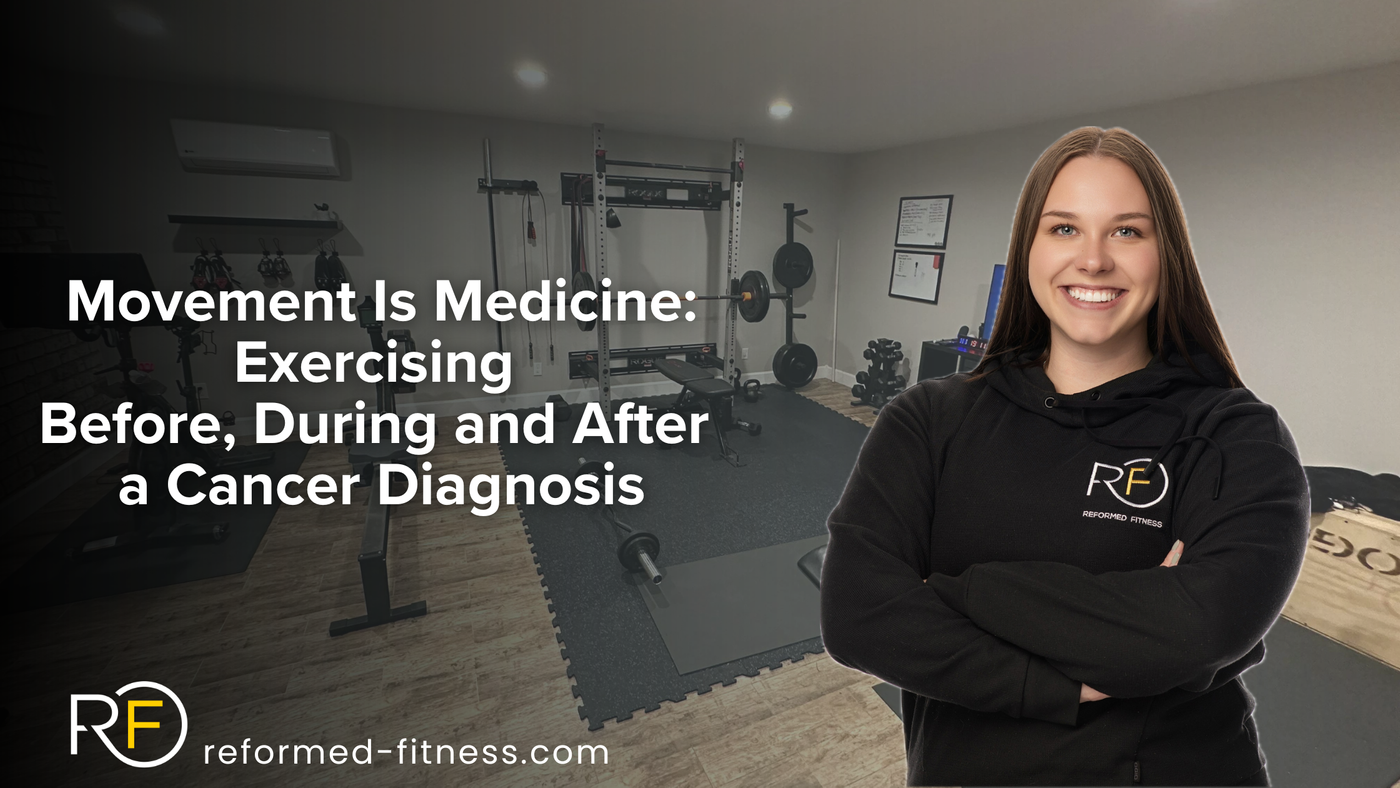As exercise physiologists, we hear something like this all the time:
“I just finished my cancer treatment, but I feel exhausted all the time. Should I really be exercising right now?”
It’s a fair question, and one rooted in fear.
For years, people were told to rest during and after treatment. But research now shows that the opposite is true.
Movement isn’t just safe after a cancer diagnosis, it’s medicine.
Let’s walk through it.
The Physiology: What Cancer and Chemotherapy Do to the Body
Each year, nearly 2 million people in the U.S. are diagnosed with cancer.
Survival rates have doubled in the past 40 years, but that longer lifespan often comes with lasting side effects.
Fatigue. Muscle loss. Weight gain. Shortness of breath.
Even increased risk of heart disease and stroke all caused not by the cancer itself, but by the treatments that save lives.
One of the most effective and widely used chemotherapy drugs is Doxorubicin.
It’s powerful, but it doesn’t just attack cancer cells… it can also damage the heart and diaphragm, leading to what’s known as cardiotoxicity.
That means years later, survivors can experience reduced heart function, chronic fatigue, or difficulty breathing.
The Research: Movement as Medicine
Professor Anna Campbell, MBE, and her colleagues have led groundbreaking research showing that exercise can prevent or even reverse many of these side effects.
During treatment, staying active helps:
Maintain cardiovascular and muscular fitness
Reduce fatigue and pain
Improve sleep and mood
Support treatment tolerance and recovery
After treatment, those benefits only grow:
Rebuilding lost muscle and bone
Restoring body composition
Reducing anxiety and depression
Boosting confidence and quality of life
For breast and prostate cancers, in particular, resistance training reduces joint pain, strengthens bone density, and improves functional movement.
Even in advanced cancer, exercise has been shown to improve strength, respiratory capacity, and energy.
The Cardiorespiratory Connection: Protecting the Heart and Lungs
Dr. Ashley Smuder and Branden Nguyen from the University of Florida took this question even deeper.
Their research looked at how exercise can protect the heart and breathing muscles during chemotherapy, specifically with doxorubicin.
Here’s what they found:
Animals that exercised before and during chemotherapy kept stronger heart and diaphragm function.
Exercise preserved mitochondrial health, the tiny power plants inside cells that generate energy.
It reduced oxidative stress, limiting the damage chemotherapy causes to healthy tissues.
And it activated protective transport proteins, especially one called ABCD8, that helped pump the chemotherapy drug out of mitochondria, protecting cells from toxicity.
In other words: exercise didn’t interfere with treatment, it actually helped the body tolerate treatment better.
Moderate vs. High-Intensity Exercise: The Surprising Difference
When researchers compared moderate continuous exercise to high-intensity training (HIT), the high-intensity group actually saw greater protection.
The HIT group:
Maintained lean muscle and prevented fat gain
Improved respiratory performance
Preserved nerve and diaphragm function, protecting breathing strength more effectively than the moderate group
That means higher-intensity, carefully prescribed workouts may create stronger protective effects against chemotherapy-induced fatigue and weakness.
Why This Matters for Survivors
Early human studies mirror these results.
People who stay active during chemotherapy maintain cardiorespiratory fitness, tolerate treatment better, and report less fatigue.
The key? It doesn’t have to be complicated.
Most patients benefit from:
Moderate aerobic activity (like walking or cycling) 3x per week
Resistance training 2x per week
Gentle flexibility or balance work (yoga, Pilates, or stretching)
The main takeaway:
“Avoid inactivity. Any movement is better than none.” - Professor Anna Campbell, MBE
Why Exercise Works
Exercise helps regulate inflammation, improve blood flow, and reduce the build-up of chemotherapy drugs in healthy tissues.
It supports mitochondrial repair and strengthens the body’s antioxidant defenses.
In simple terms, it helps your body fight back against treatment-related fatigue, weakness, and cellular damage.
Actionable Takeaways: How to Move Safely During and After Cancer Treatment
Start small and early. Even 10 minutes a day of walking or gentle resistance training makes a difference.
Strength train twice per week. It helps rebuild muscle, protect bone density, and prevent long-term metabolic decline.
Add aerobic intervals. Once cleared by your medical team, structured interval work (like gentle HIIT) can improve heart and lung resilience.
Prioritize recovery. Hydration, sleep, and balanced nutrition are critical to tolerate both exercise and treatment.
Work with a qualified exercise physiologist. Personalized guidance ensures safety and maximizes benefits, especially if you’re managing treatment side effects.
Final Thought
Cancer changes your life, but it doesn’t have to define it.
Movement helps people not just survive, but live well.
It protects your heart. It strengthens your lungs. It restores your confidence and independence.
Movement matters and it always will.
Doing It Alone Is Hard - Ready to Have an Exercise Physiologist on Your Side?
Book your FREE Discovery Call today, and we’ll help you build a simple, safe, and personalized strength plan, no matter where you’re starting.

